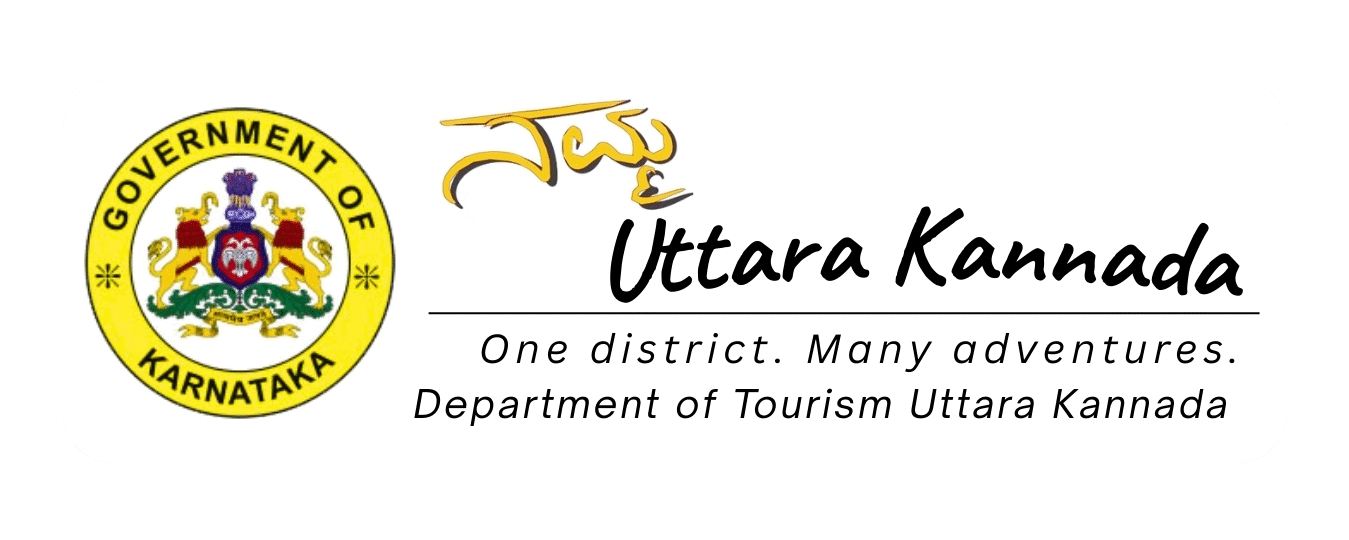Folk Rhythms of Uttarakannada
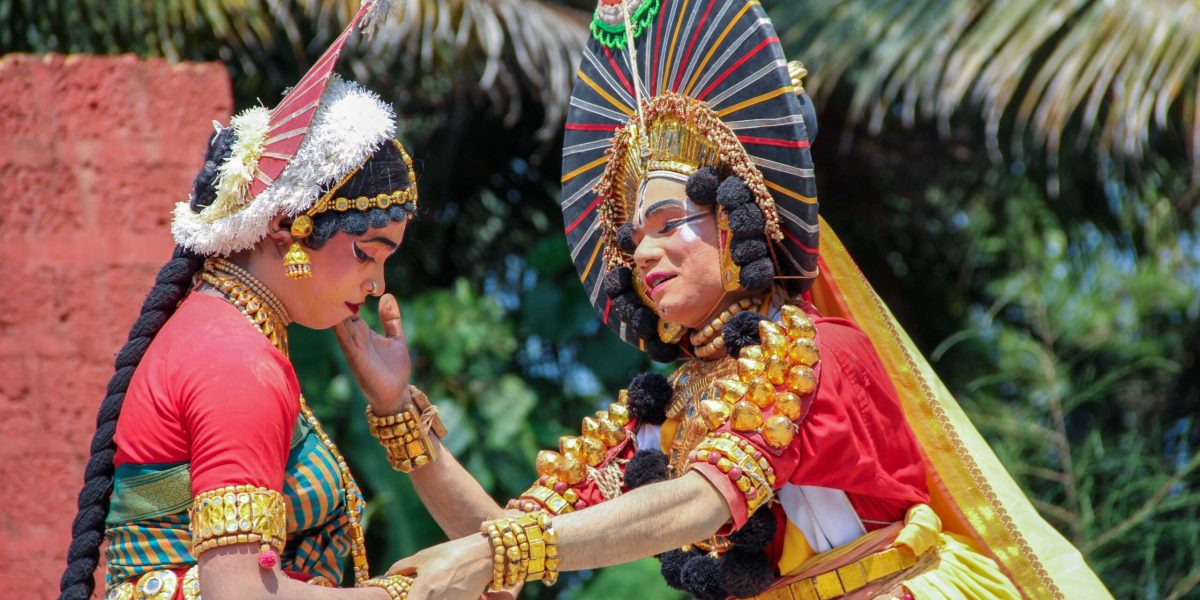
Yakshagana
Yakshagana is a vibrant traditional theatre form that blends dance, music, dialogues, and elaborate costumes to bring mythological stories to life. Deeply rooted in the cultural landscape of Uttara Kannada, it is performed through the night and captivates audiences with its powerful storytelling and rhythmic intensity. The performers, adorned in striking makeup and headgear, enact episodes from epics like the Ramayana and Mahabharata, accompanied by live music and dramatic narration.
More than just a performance, Yakshagana is a living expression of Uttara Kannada’s spiritual and artistic heritage.

Bedaravesha
Bedara Vesha is a powerful and energetic folk performance traditionally observed during the nights of Maha Shivaratri, especially in parts of Sirsi and surrounding regions in Uttara Kannada. Performers, dressed as fierce hunters with painted bodies, garlands, and dramatic headgear, dance through the streets enacting scenes inspired by tribal warrior traditions and devotion to Lord Shiva.
The ritual, often accompanied by drumming and chanting, symbolizes courage, spiritual power, and the cultural vibrance of the region. Bedara Vesha is not just a spectacle — it’s a deeply rooted tradition that stirs devotion and community spirit.
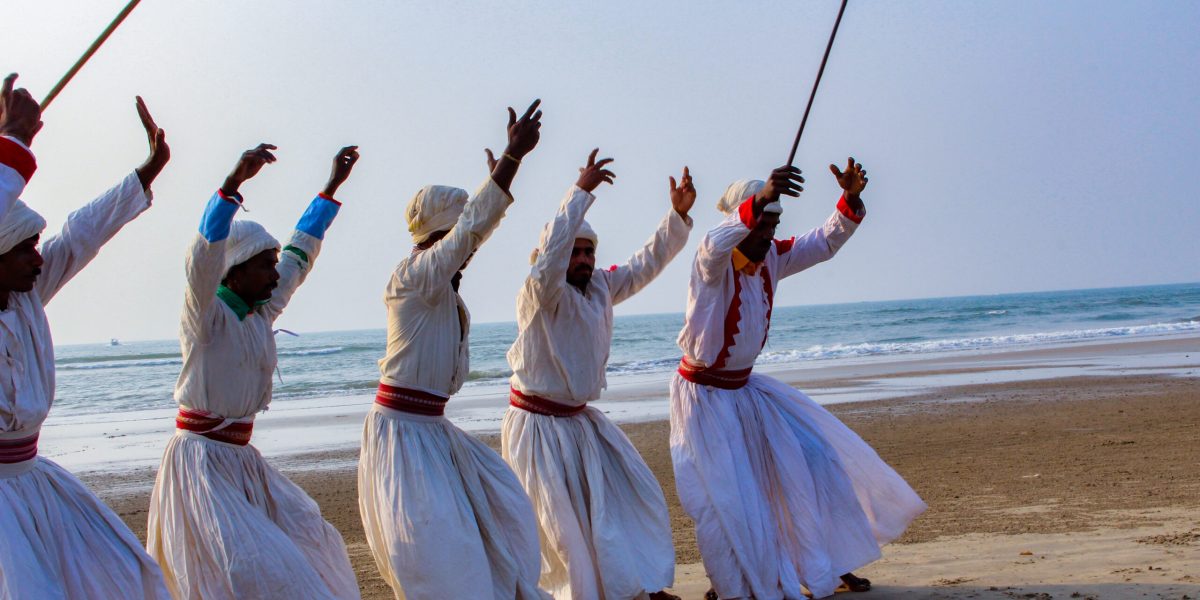
Gowli Dance
Gowli Dance is a traditional folk performance of the Gowli (Golla) community in Uttara Kannada, known for their deep connection with cattle rearing and rural life. Performed during festivals and special occasions, this dance celebrates agrarian joy, seasonal cycles, and the spirit of unity within the community.
Dressed in simple traditional attire, men and women perform rhythmic steps in circular formations, accompanied by folk songs and instruments that reflect the pastoral life they lead. The dance is a living tribute to their heritage, blending movement, music, and the pride of a self-sustained lifestyle.
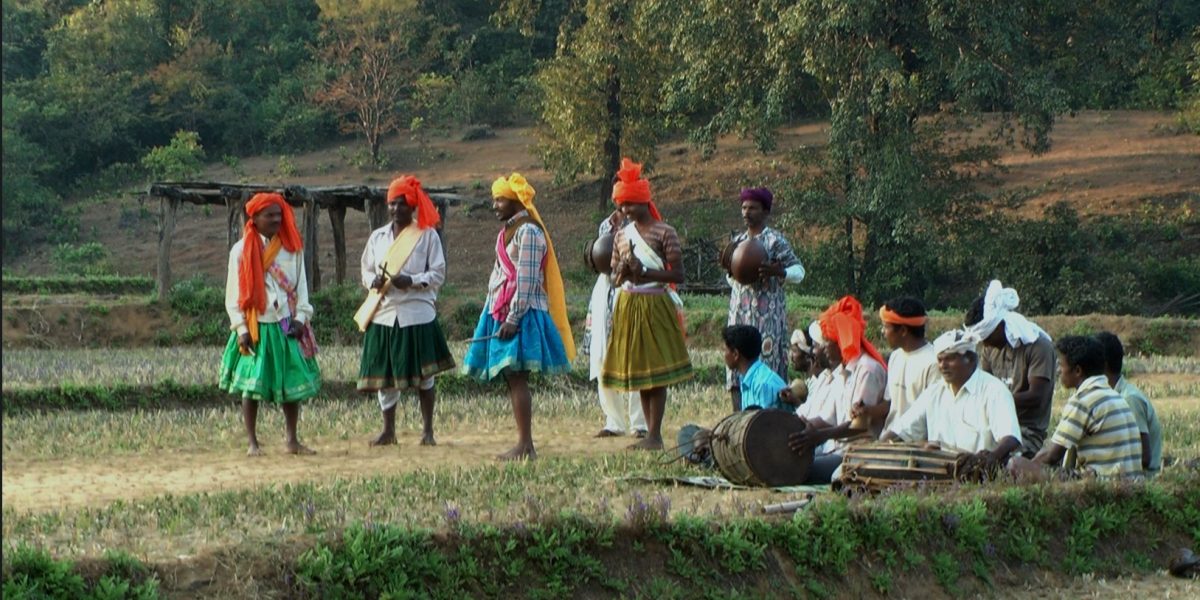
Kunabi Dance
Kunabi Dance is a traditional folk dance of the Kunabi tribe, one of the indigenous communities of Uttara Kannada. Performed mostly during harvest festivals and community gatherings, this dance reflects their gratitude towards nature and the spirit of togetherness.
Men and women in traditional attire form circles or rows and perform synchronized steps to the beat of folk instruments and tribal chants. The dance is lively, rooted in everyday life, and passed down through generations — keeping the Kunabi identity vibrant and alive in the forests and villages of the district.

Siddi Dance
Siddi Dance is a vibrant and energetic folk tradition performed by the Siddi community, descendants of African migrants who settled in parts of Uttara Kannada centuries ago. Known for its powerful drumbeats, fast-paced movements, and celebratory energy, the dance reflects a blend of African rhythms and Indian folk traditions.
Performed during festivals, weddings, and community events, Siddi Dance is more than entertainment — it’s a proud expression of identity, resilience, and cultural harmony. With colorful attire, body movements inspired by African tribal dances, and a deep connection to ancestral roots, it stands out as one of the most unique cultural art forms of the region.

Gonda Dance
Gonda Dance is a ritualistic folk performance mainly seen among the Halakki and Kunabi communities of Uttara Kannada. Traditionally performed during religious festivals and village celebrations, it represents devotion, fertility, and community bonding.
The dancers, often men, wear elaborate costumes with vibrant turbans and perform to the rhythms of percussion instruments. The movements are energetic and patterned, reflecting both discipline and spiritual fervor. Gonda Dance remains an enduring symbol of indigenous culture passed down through oral traditions.
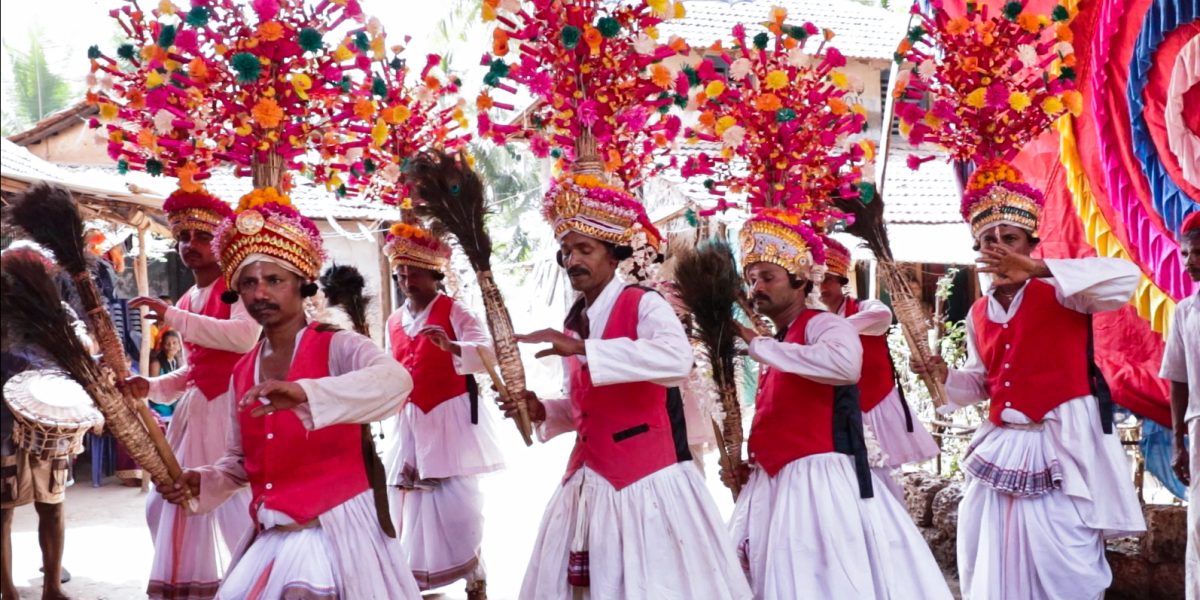
Halakki Suggi
Halakki Suggi Kunitha is a harvest dance performed by the Halakki Vokkaliga community, a tribal group native to coastal and forest regions of Uttara Kannada. It is usually seen during the Suggi (harvest) season, expressing gratitude for a bountiful crop.
Women in traditional attire with elaborate bead jewelry and headgear dance in graceful lines, clapping and swaying to folk songs sung in their dialect. The performance blends celebration, ritual, and social unity, preserving the cultural identity of the Halakki people.
